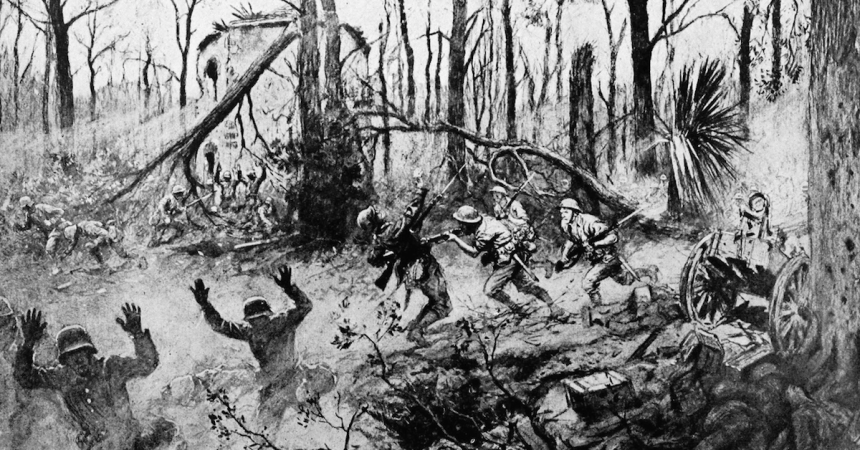When you’re sitting by the fire with a cup of cocoa, a white Christmas sounds heavenly. When you’re at war, it’s a different story. During Washington’s camp at Valley Forge, roughly 12,000 continentals wintered in ragged huts. The frigid temperatures resulted in frequent bouts of disease, especially since many of the soldiers were lacking in proper clothing. Some weren’t fit for service at all, their bare feet leaving bloody footprints in the snow. It wouldn’t be the last time that American soldiers battled the elements. During the Civil War, the Union army confronted the Confederates on the Ozark Plateau in the cold of winter. The Confederates retreated, but the Union army gave chase. Mid-pursuit, the weather took a turn for the worst, and both armies were engulfed in a storm of snow and sleet.
So what’s the deal with this fluffy white stuff that can cause so much trouble? How does it work? Interestingly, snow isn’t as self-explanatory as you’d think. Keep reading for some of the most surprising tidbits about nature’s chilliest, prettiest form of precipitation.
- The hush of falling snow is a real thing.
A blanket of freshly fallen snow actually absorbs sound waves quite effectively, which is why a snowy night seems a little quieter than usual. Strangely, winter weather can also amplify sound, leading to lingering echoes through the treetops. When the snow melts and refreezes, it turns into ice. Instead of absorbing sound like snow, ice reflects it! Pretty cool, huh?
- Snow is white…or is it?
Snowcapped peaks look pretty darn white, but snow is actually colorless. The clear flakes scatter light in all directions, diffusing the complete color spectrum and making it appear white. That said, snow can take on different hues in different conditions. Environmental pollution and algae can turn snow orange, pink, or even black. Meanwhile, deep snow can absorb more red light than blue, giving it a chilly, bluish tint.
- Snow is warm.
Sort of. While snow is technically frozen, it traps tons of air as it collects on the ground. 90-95% of fallen snow is actually trapped air, making it a shockingly good insulator. That’s why animals make burrows in the winter, and why igloos aren’t ice cold. The inside of an igloo can stay up to 70 degrees warmer inside than out! Soldiers have also used the insulating power of snow to their advantage. At the Northern Warfare Training Center in Black Rapids, Alaska, the temperatures can reach negative 60 degrees Fahrenheit, but students learn to survive.
- Snowflakes form around a nucleus.
While snow doesn’t develop like the cells you read about in 7th-grade biology, they do form around a central particle. A speck of dirt or other microscopic debris becomes the center of each snowflake as it freezes, giving it that classic snowflake shape. This is why snow looks different than hail or sleet, which freeze as they fall without the help of a nucleus. If you look at a snowflake under a strong enough microscope, you can see the material that started it all. - There are over 35 kinds of snowflakes.
One scientist named Andy Brunning loved snow so much that he identified as many different types of snowflakes as he could. In total, he found 35 types of snowflakes. He organized these into categories, including germs, rimed, plane, irregular, and column. Which is your favorite? - Snowflakes always have 6 sides.
The 8-sided snowflake decorations you found at Homegoods are a lie. The geometry of water molecules makes it impossible for anything but a six-sided ice crystal to form. Not five-sided. Not eight-sided. Six. Get it right, Hallmark. - Snowflakes CAN be identical.
If you’ve ever told someone they’re as one of a kind as a snowflake, it might be time to come up with a new compliment. While snowflakes do come in a wide array of shapes and patterns, a scientist named Nancy Knight found two snowflakes that were completely identical. I guess the clouds were expecting twins. - The biggest snowflake recorded was bigger than your head.
Unless you have a really big head, that is. The largest recorded snowflake was 15 inches wide! It fell during a winter storm in January 1887 in Fort Keogh, Montana. Some ranch owners there claimed the flakes were as big as milk pans!
- It once snowed over 100 inches of snow in a single day.
If you love snow, Capracotta, Italy is the place for you. On March 5th, 2015, it snowed 100.8 inches in less than 24 hours. That’s more than eight feet! Italy’s not the only place to get great snow, however. In Washington State, Mount Baker saw the greatest recorded snow in a single season, ringing in at 1,142 inches. - Not all snowstorms are blizzards.
You know how all squares are rectangles, but not all rectangles are squares? The same goes for blizzards and snowstorms. All blizzards are snowstorms, but it’s the amount of wind that sets blizzards apart. Snowstorms come with plenty of falling snow, but blizzards take it up a notch with sustained heavy winds or frequent gusts of 25 mph or more.
I love a white Christmas as much as the next guy, but if it’s that stormy out I think I’ll stay inside. Cocoa, anyone?









